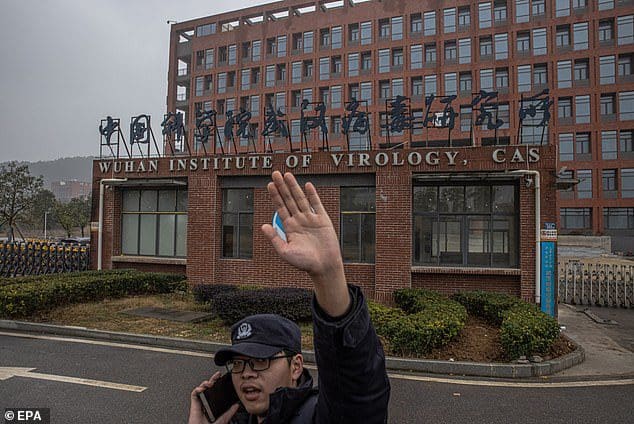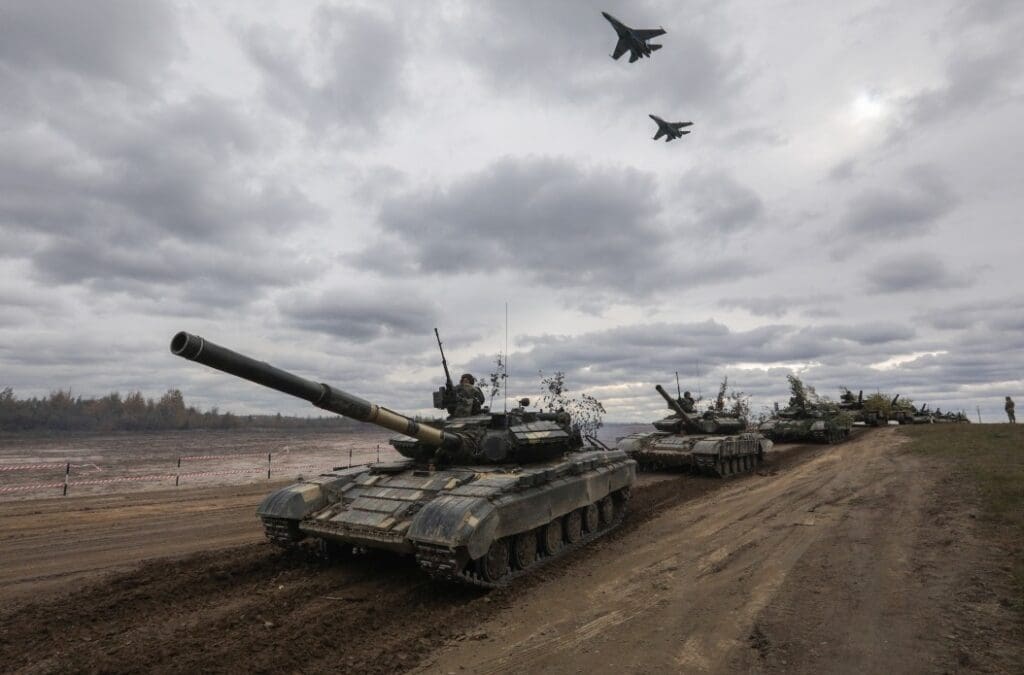

Chinese Government Began COVID-19 Vaccine Research “No Later Than November 2019”, Say Experts
The new U.S. Senate report pointing the finger at a lab leak from the Wuhan Institute of Virology makes for very interesting reading. Katherine Eban of Vanity Fair and Jeff Kao of ProPublica have done a detailed write-up with the inside track on the report which is worth reading alongside it.
In this post I want to make a few observations on what the report and article add to our understanding of the origin of the virus.
To my mind one of the most interesting things about the report is that it seems to try to pin it on a leak around November 2019, when there was evidence of a major safety breach at the Wuhan Institute of Virology (WIV). From Eban and Kao:
Vanity Fair and ProPublica downloaded more than 500 documents from the WIV website, including party branch dispatches from 2017 to the present. To assess Reid’s interpretation, we sent key documents to experts on CCP communications. They told us that the WIV dispatches did indeed signal that the institute faced an acute safety emergency in November 2019; that officials at the highest levels of the Chinese government weighed in; and that urgent action was taken in an effort to address ongoing safety issues. The documents do not make clear who was responsible for the crisis, which laboratory it affected specifically or what the exact nature of the biosafety emergency was.
The Senate report itself notes that “the November 12th 2019 [CCP] report suggested a biosafety problem had occurred at the WIV sometime before November 2019”. It states that evidence “strongly suggests” a “mid-October and early to mid-November” emergence.
The Senate report includes this quote from the November 12th CCP report referring to prior safety breaches at the WIV:
Owing to [the fact] that the subject of research at the P4 lab is highly pathogenic microorganisms, inside the laboratory, once you have opened the stored test tubes, it is just as if having opened Pandora’s Box. These viruses come without a shadow and leave without a trace. Although [we have] various preventive and protective measures, it is nevertheless necessary for lab personnel to operate very cautiously to avoid operational errors that give rise to dangers. Every time this has happened, the members of the Zhengdian Lab [BSL4] Party Branch have always run to the frontline, and they have taken real action to mobilise and motivate other research personnel. (emphasis added [by Senate report])
The Senate report notes that the Chinese Government sent “important oral and written instructions” to the WIV regarding the “complex and grave situation facing [bio]security work”.
On November 19th 2019, seven days after the BSL4 teams’ report was issued, the WIV hosted a special training session run by a senior Chinese Academy of Sciences biosafety/biosecurity official who relayed “important oral and written instructions” from PRC leadership in Beijing to the WIV regarding the “complex and grave situation facing [bio]security work”. At the same training session, the Deputy Director of the Office of Safety and Security at the WIV “pointed to the severe consequences that could result from hidden safety dangers, and stressed that the rectification of hidden safety risks must be thorough, and management standards must be maintained.”
One event that has caused many to suppose the Chinese authorities were aware of a leak earlier than November was that the WIV virus database was taken offline on September 12th 2019 and public access has not been restored since. (See this report for the detailed account of what we know about the database.)
The new Senate report provides for the first time an explanation for the database going offline on that date, namely that it immediately followed on from a political inspection, where the criticism was essentially ‘not enough progress’ rather than any particular safety issue. Eban and Kao explain:
By the fall of 2019, trouble was brewing at the WIV, according to documents turned up by Toy Reid.
On September 11th 2019, the CCP’s No. 15 Inspection Patrol Group arrived at the Beijing headquarters of the WIV’s parent organisation, the Chinese Academy of Sciences (CAS), to conduct a two-month political inspection. The inspection was part of a larger routine sweep of 37 state organisations. According to the inspection team’s leader, its purpose was to sniff out any “violations of political discipline, party organisational discipline, [financial] ethics discipline, discipline with regard to the masses, work discipline, and discipline in one’s personal life”. They were also on the lookout for instances of insufficient loyalty to the CCP’s mission.
The Beijing inspectors identified more than a dozen “principal problems” at CAS, among them a “‘persistent gap’ between Xi Jinping’s important instructions on pursuing ‘leap frog development in science and technology’ and CAS’s implementation of Xi’s instructions”. In short: not enough progress, despite all the pressure.
A week earlier, on September 3rd, more than 50 managers and staffers at the WIV had met to discuss a looming internal audit that would evaluate political discipline, according to a party branch dispatch. The scientists and their overseers were facing scrutiny at every level.
A trail of evidence from that fall appears to show the WIV trying to address a crisis. “That’s when you start to see emergency response activity,” says Larry Kerr, the former director of the HHS pandemic office.
It began within 24 hours of the start of the CAS inspection. On September 12th between 2 and 3 am, the interim report says, the WIV took down its Wildlife-Borne Viral Pathogen Database, which contained more than 15,000 samples from bats. The database had been a resource for researchers globally. A password-protected section only accessible to WIV personnel contained unpublished sequences of bat beta-coronaviruses – the family of coronaviruses to which SARS-CoV-2 belongs. Public access to the database has not yet been restored.
It’s worth noting here that the Senate report provides no evidence of the Chinese military taking control of the WIV on September 12th, as some have suggested. Rather, it was a routine political inspection that occurred on that date and triggered the removal of the database. (The removal was for reasons that are unclear; it’s also unclear why U.S. researchers didn’t complain about being denied access to the important data.)
The plot thickens when Eban and Kao explain that the experts they consulted estimated that the WIV’s Yusen Zhou must have begun working on his early Covid vaccine candidate “no later than November 2019”. They add that Zhou mysteriously died shortly after posting his vaccine research findings in May 2020.
On February 24th 2020, Zhou became the first researcher in the world to apply for a patent for a SARS-CoV-2 vaccine. His proposed vaccine worked by reproducing a part of the virus’s spike protein known as the receptor binding domain. In order to start vaccine development, researchers would have needed the entire SARS-CoV-2 genetic sequence, the interim report says.
Shi Zhengli has said that her lab was the first to sequence the virus and completed that work on the morning of January 2nd 2020. That sequence is the one Zhou said he worked with in his Chinese patent application, which Vanity Fair and ProPublica reviewed.
According to the interim report, there are limits to how fast a vaccine can be developed. In particular, it said that “animal studies are designed to last a specific length of time and cannot be curtailed without compromising the resulting data”.
In his patent application and in subsequently published papers, Zhou documented a robust research and development process that included both adapting the virus to wild-type mice and infecting genetically modified ones with humanised lungs.
Vanity Fair and ProPublica consulted two independent experts and one expert adviser to the interim report to get their assessment of when Zhou’s research was likely to have begun. Two of the three said that he had to have started no later than November 2019, in order to complete the mouse research spelled out in his patent and subsequent papers.
Larry Kerr, who advised on the interim report, called the timeline laid out in Zhou’s patent and research papers “scientifically, technically not possible”. He added, “I don’t think any molecular biology lab in the world, no matter how sophisticated, could pull that off.”
Rick Bright, the former HHS official who helped oversee vaccine development for the U.S. Government, told Vanity Fair and ProPublica that even a four-month timetable would be “aggressive,” especially when the virus in question is new. “Things aren’t usually that perfect,” he said.
Jesse Bloom, a virologist at the Fred Hutchinson Cancer Research Center, told us the timetable was very fast but “feasible for a group with substantial existing expertise and ongoing work” on developing similar SARS-related coronavirus vaccines, but only if “everything went right”.
Zhou and his colleagues described their COVID-19 vaccine research in a preprint posted on May 2nd 2020. When it was published in a peer-reviewed journal three months later, Reid found, Zhou was listed as “deceased.”.The circumstances of his death have not been disclosed.
The Senate report is clear that the evidence for a zoonotic origin is lacking. Eban and Kao note that even China’s own researchers have reported the lack of evidence on this front:
On February 25th 2022, a team of researchers from China’s CDC published a preprint revealing that of the 457 swabs taken from 18 species of animals in the market, none contained any evidence of the virus. Rather, the virus was found in 73 swabs taken from around the market’s environment, all linked to human infections. And although some seafood and vegetable vendors in the market tested positive, no vendors from animal stalls did.
The Senate report states that “available epidemiologic evidence strongly suggests that SARS-CoV-2 began infecting humans in Wuhan or the surrounding area between mid-October and early to mid-November 2019”.
However, it’s not clear that this timeline can account for all the evidence that SARS-CoV-2 was spreading undetected all over the world by autumn 2019. In particular, a blood sample from Lombardy from September 12th 2019 was found to be positive for both viral RNA and antibodies. This pushes the origin back into the summer, with the researchers themselves hypothesising a June-July emergence.
Based on this evidence, my guess would be that in November 2019 the Chinese Government became aware of the virus circulating and traced it to the WIV. This would explain its forcible safety intervention and also the beginning of the development of the vaccine at that time by Zhou. The leak would then have occurred some time before, probably late summer to give time for it to reach Lombardy by the end of August
Of course, we know that up until January 23rd 2020 the Chinese Government was playing down the threat from the virus. We also know that the doctors in Wuhan in December 2019 seemed to have been clueless as they encountered cases in their hospital. This may be because the Chinese Government was not communicating with doctors or the public about its concerns and was basically hoping it would blow over. This would also explain the early suppression of ‘whistleblowers’.
One final point is that both the article and the Senate report are rightly critical of the lack of transparency from China frustrating these investigations. However, neither mentions the integral role of U.S. researchers and funding in the WIV research and the fact that they are also not cooperating, as Jeffrey Sachs made clear in his report for the Lancet. (U.S. virus databases were also removed in 2021, for example.) Even without cooperation from China, a lot more light would be shed on this matter if we had full cooperation from U.S. scientists and officials.
In light of the role of suspected U.S. intelligence personnel (in particular Robert Kadlec) in the creation of both the report and the Eban and Kao article, Dr. Robert Malone has suggested this report is a ‘limited hangout’ from the intelligence community seeking to pin the blame entirely on China and divert attention from the major U.S. role in the debacle. That sounds right to me.
Stop Press: UCL’s Professor Francois Balloux has returned to address the recent pre-print claiming to find proof that the virus was created in a lab. He defends the paper, though admits it is more like circumstantial evidence that is unlikely to sway opinions. However, he adds: “The nightmare scenario to me would not be the eventual confirmation of an accidental lab leak, but confirmation of a lab leak whose evidence has been aggressively suppressed.”







